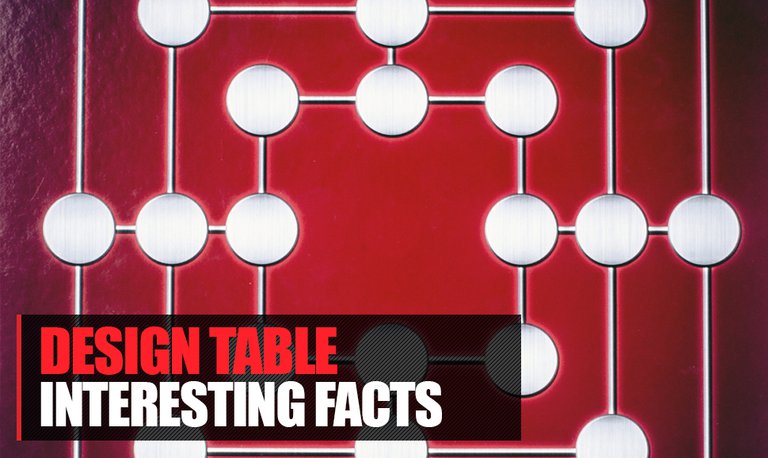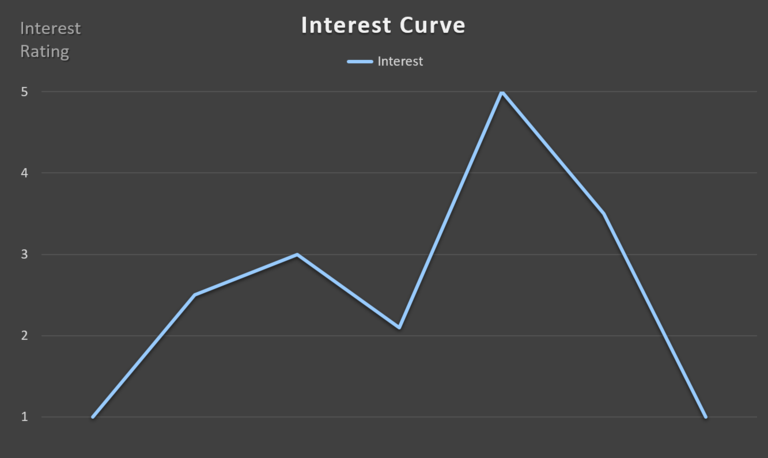
Hey there!
Welcome to a new addition of Design Table. To start off, let us be clear that as game designers, we need to be in-tune with ways where the human minds can be remarkably similar. Not in what we experience or how we experience it, but in what draws people and gets them to be interested. Before you dismiss this as a hippie conspiracy, know that there is quite a bit of science done in the subject.
Have you ever noticed how music, TV shows, books, artwork, or in general, story telling has a particular rhythm and draws their audience in, captivating them? This is in fact a process and can be broken down into several parts. There is a building of perhaps anticipation; there is a delivery that draws your attention to a piece, a tone, a face or an action. There is breathing space not to overwhelm and then there is a final crescendo, a finale to give a lasting memory captivating your interest to the point where you can be fully immersed. Coincidence? Hardly! It is great design. What is this mysterious process? There is no mystery about it, it is simply a process of design that I argue should be part of every game designer’s toolbox.
How to draw an interest curve
An interest curve has two main components that you are going to plot. First and foremost, the game time/progress, and second, the interest level. This is how captivating you find a particular level or world but essentially, you can apply the rating to any time flow of the game. The ratings are:
- No interest - This rating you aim to avoid as to leave the player wanting more. Even after the endgame, you would like players to at least keep their curiosity for replay value. If you notice that, you are reaching zero, than it’s a sign that this section of the game needs redesign.
- Curious - This is essentially the level most new players will start at and a good starting point for any tutorial or game start. As a designer, try to harness that curiosity and build on it. This level is also an ideal ending point leaving the players curious and wanting more. It’s a good setup if you plan to do expansions, sequels and also it usually means the game will be replayed.
- Slightly Interested - This level is past curious, when a player has an interest already in the story or some of the mechanics, but sees the tasks still as a basic chore rather than a game. Farming, daily quests, harvesting resources or reorganizing units, weapons or gear, and simplified tasks belongs to this bracket. This can also be a good level in a game after a very draining or stressful task. It’s important to give the player time to process, get some reflection and digest what has happened, but be careful to force it upon players. Recuperation is very individual and giving players the means to continue when they want will make this part seem very fluent and natural.
- Moderately Interested - Now you have captured the player and given a task that seems rather captivating and interesting to further a reasonable goal. This is the normal level of the game. Where a player is comfortable but not heavily challenged.
- Highly Interested - Challenge the players, their imagination and their intellect. This gives a problem to solve that is harder than the rest of the normal game-play. Boss fights, challenging puzzles or difficult skill play, perhaps something story-wise outside the norm happenings. Level endings of world progression usually ends here. For other games, this is the story advancing towards the endgame which keeps the player on their toes.
- Fully Captivating Interest - The final revelation, the crowning of the story, the big finale, the crescendo, the main BOSS fight, the top rate fight, the hardest challenge or the mother of all mother explosions! This should be achieved at least once in each game and if anything this is, the ONE-thing players will remember when they have played your game.
When you have plotted each part of your game on a chart, connect the dots to gain a curve.

Using the Interest Curve
As a designer, assign to each project your desired interest curve. There is fantastic value in seeing your team, play-testers and others draw their interest curve for your game. Having it as a natural part of the play-tester's feedback model will gain you valuable experience and essential feedback for project improvement. Comparing your intention with the experience of others, you will quickly have a chart over how close the execution came to your design and where more needs to be done to achieve your desired level. You will see where you need to tone down or tune up the elements while at the same time it will give you a toolset for reflecting concrete levels of player interest.
And that's it for Interest Curves! This concludes this week's Design Table. If you would like to send in a question or write us feedback on today’s session, you can either do it via Twitter, Facebook or email and we will possibly make them part of the next series!




